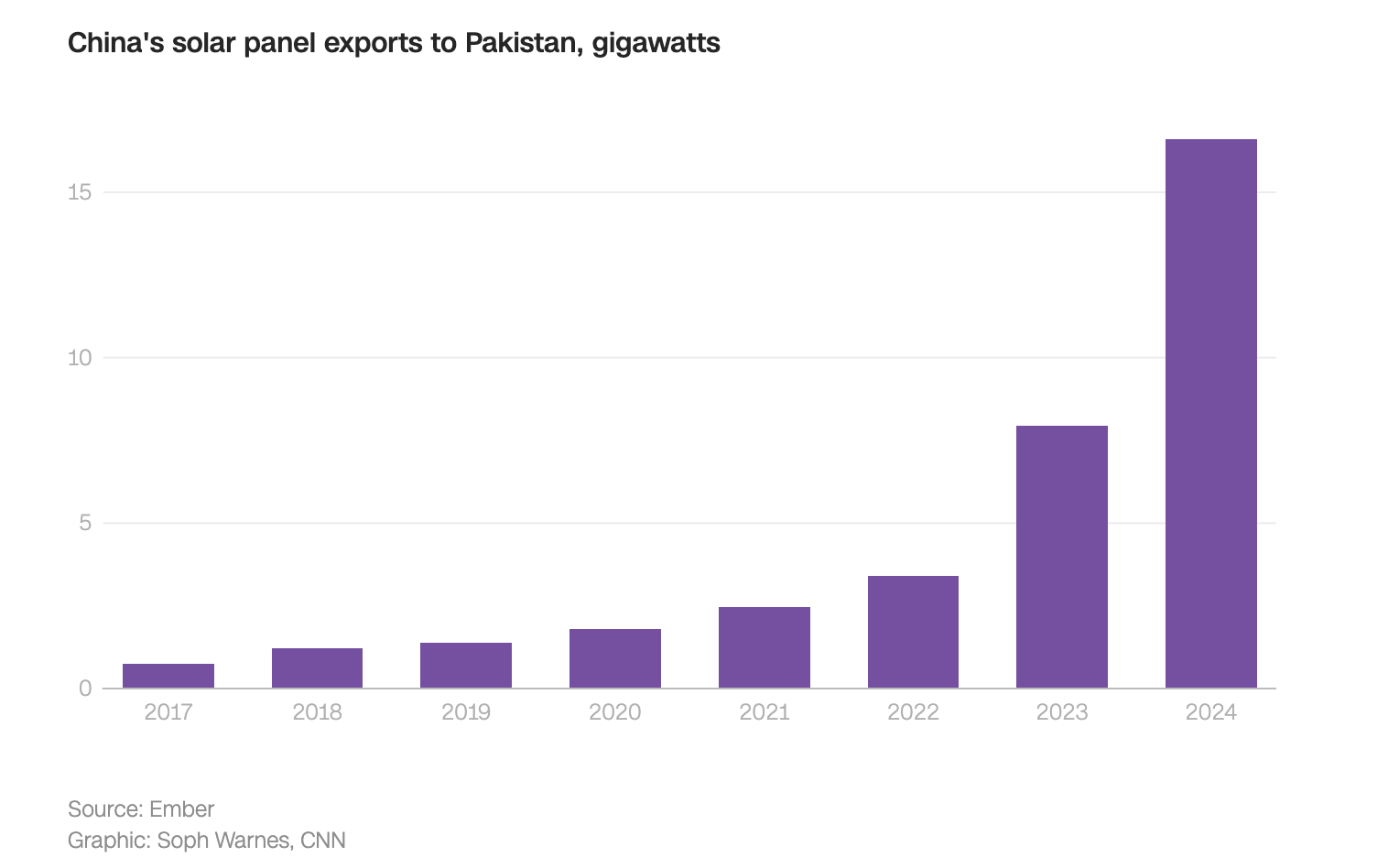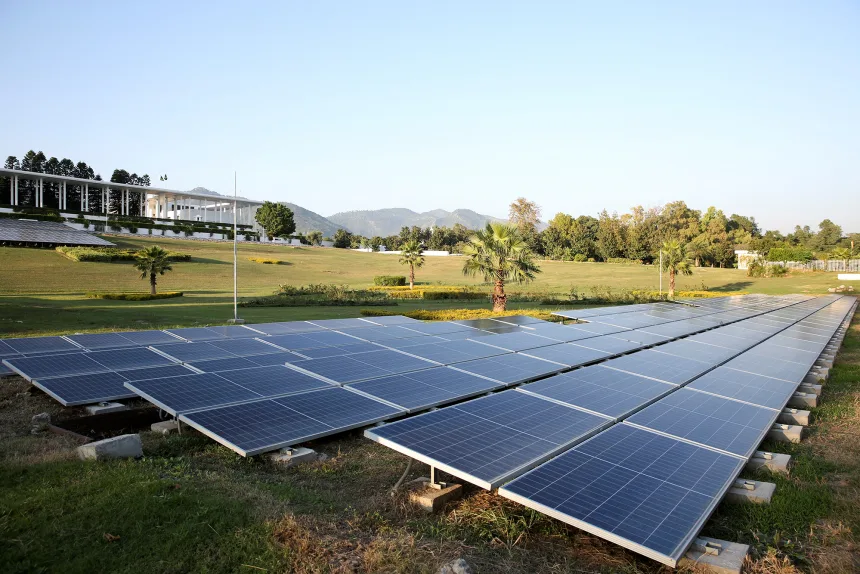The "Blue Revolution" Sweeping Across Pakistan

TEXT : Patrick Blackman
Looking down over Pakistan’s urban areas, one is struck by the deep blue that covers the rooftops. They are neither tiles nor metal sheets, but glittering solar panels reflecting the sunlight. From major cities such as Lahore, Karachi, and Islamabad to the small homes and gardens of rural villages, the same blue panels are installed. In a country where electricity shortages and blackouts were once part of daily life, a quiet energy revolution is now underway.
Pakistan, a South Asian giant with a population of 240 million, has long struggled with chronic electricity shortages. Its transmission network is outdated, and securing fuel for power plants remains unreliable. Scheduled power cuts are common, and in urban areas, daily life and business activities often grind to a halt.
In recent years, however, the pace of solar power adoption has been accelerating. Behind this surge is the influx of astonishingly cheap Chinese-made solar panels. The sharp decline in panel prices has opened the door for households from the urban middle class to the rural poor.
According to local statistics, the number of households and small businesses installing solar systems has multiplied several times over in the past five years. In cities, commercial building rooftops are almost entirely covered with panels, while in rural areas, solar power is increasingly used to operate well pumps and irrigation systems.

This boom is fueled by imports from China, the world’s largest producer of solar panels. In recent years, oversupply has flooded the global market, causing prices to plummet—today, the cost per watt is just a fraction of what it was a decade ago.
Pakistani importers buy these low-cost panels in bulk and supply them to domestic retailers and installers. Installation costs have also dropped significantly, making solar systems accessible to ordinary households.
Moreover, the Pakistani government, as part of its strategy to address electricity shortages, has been promoting small-scale renewable energy. Subsidies and tax incentives are available for certain household-level solar installations.
In recent years, Pakistan’s economy has been shaken by political instability, currency depreciation, and inflation. The cost of importing fossil fuels has soared, and electricity prices have surged. For rural and low-income communities, relying on conventional electricity has become increasingly difficult.
In this environment, solar power is not merely a choice—it has become a means of survival. By generating electricity independently, households can avoid the risk of blackouts and reduce long-term energy costs.
In rural areas, agricultural pumps that once depended on diesel generators are now being powered by solar energy, reducing fuel expenses and cutting greenhouse gas emissions.

However, this rapid expansion brings challenges. First, the low prices often come with inconsistent quality, with some systems losing output within a few years or experiencing frequent breakdowns. Many areas still lack proper maintenance services and access to replacement parts.
Second, the country is highly dependent on Chinese-made panels. Most panels, inverters, and related equipment are imported, leaving the market vulnerable to currency fluctuations and geopolitical tensions. If supply is disrupted, the “blue revolution” could stall abruptly.
Furthermore, integration with the national grid and implementation of net metering—the system for buying surplus electricity—remain insufficient, meaning that generated power is sometimes underutilized.
Even so, the potential of this transformation is immense. The structural problem of chronic electricity shortages is being eased by the spread of decentralized renewable energy. If the government modernizes the grid and strengthens the net metering system, solar power can evolve from a mere blackout countermeasure into a sustainable energy foundation.
Domestic assembly of panels and local production of related components could reduce dependence on China and create jobs. Some companies are already moving toward local manufacturing and expanding repair services.
The deep blue that now blankets Pakistan’s rooftops is more than just a color. It is the manifestation of people’s determination to confront energy shortages and economic uncertainty, and a small investment in the future. Whether this “blue revolution” proves to be a passing trend or a true transformation of the nation’s energy structure—the answer will become clear over the next decade.
